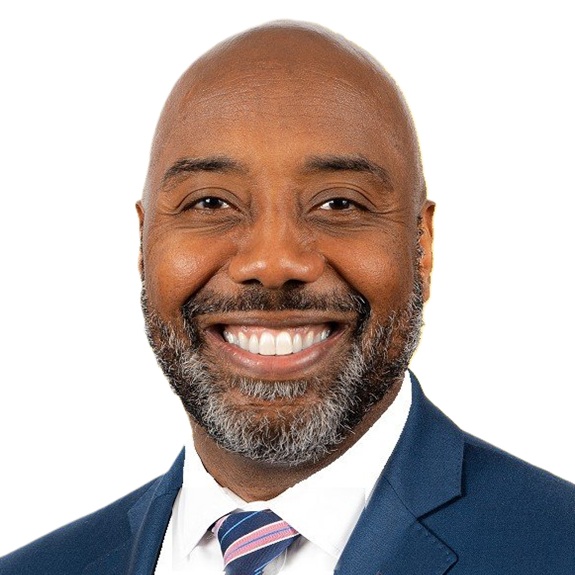Are You Maximizing Your Tax-Exempt Bucket?
Remember the child’s game hide-and- seek? As adults, most of us are still playing it. The difference is this time it’s with the IRS.


Paying state and federal taxes is part of life. Yet, of course, we all want to keep hold of as much of our income as possible too. That’s where what I like to call the grown-up version of hide-and-seek comes in. The more legal “hiding places” we can find for our money, the more we can stop the government from taking too large a cut.
However, rather than asking tax officials to close their eyes and count to 10, winning this particular game relies on having a tax-efficient financial plan. And that first means separating your finances into these three buckets:
- Taxable: Income like a salary or dividends on which we immediately pay tax and that’s designed to cover our short-term liquidity needs.
- Tax-deferred: Money in, say, a retirement plan or 401(k) that’s taxed when we use it and will fund us from retirement through death.
- Tax-exempt: Investments such as cash value life insurance that don’t get taxed at all and can be used for everything in between, like buying a holiday home, starting a business, putting the kids through college, or supplementing our retirement funds.
The advantage of this approach is that it shows you exactly where your money currently sits and, crucially, whether you’re maximizing that all-important tax-exempt bucket. Spoiler alert: Most people find they aren’t, which means they’re giving away more of their income than they need to – be it now or in the future. So, if you’re one of them, here are four ways to start boosting your tax-exempt funds today.
From just $107.88 $24.99 for Kiplinger Personal Finance
Become a smarter, better informed investor. Subscribe from just $107.88 $24.99, plus get up to 4 Special Issues

Sign up for Kiplinger’s Free Newsletters
Profit and prosper with the best of expert advice on investing, taxes, retirement, personal finance and more - straight to your e-mail.
Profit and prosper with the best of expert advice - straight to your e-mail.
The backdoor Roth
With a backdoor Roth, you contribute to a non-deductible IRA and then sweep the money from there into a tax-exempt Roth IRA. You can do this up to the annual IRA contribution limit, which is currently $6,000 ($7,000 if you’re age 50 or over). Note, though, that this works best if you only have a single IRA. Otherwise, it can become very complex and cumbersome to track your cost basis across multiple IRAs in the long-term.
The mega backdoor Roth
If you’re in a position to save more than the annual IRA contribution cap, the mega backdoor Roth could be the way to go, if your plan offers it. Here, you take the non-deductible investment limit on your retirement plan — such as a 401(k) — and, if it’s more than $6,000 ($7,000 if you’re aged 50 or over), you invest it in your plan before moving it straight into your Roth IRA. That way, you benefit from a larger tax-exempt contribution. In order for this strategy to work, your 401(k) plan must allow after-tax contributions and in-service distributions of after-tax funds.
Health savings account (HSA)
In 2022 you can invest up to $3,650 as an individual to your HSA without paying tax on that contribution. As a family, you can add up to $7,300, and there’s also a $1,000 catch-up at age 50 and older. If you use the money to pay for anything that the IRS deems a qualified medical expense before the age of 65, you won’t pay tax when you spend it. Then at age 65, that limitation goes away and you’re free to spend the money on anything. All without ever being taxed on it.
Cash value life insurance
The amount you invest in a cash value life insurance policy accumulates on a tax-deferred basis, with tax only payable on any financial gains when the policy comes to an end. In the meantime, you can make unlimited contributions and, unlike with a Roth IRA, there are no financial penalties for early withdrawals. This means you can essentially borrow from yourself to pay major expenses or solve liquidity issues – something many business owners did during the 2008 financial crisis and, more recently, the pandemic. As long as the policy is in-force, you won’t pay tax on that “loan.”
There are a few other ways to invest in tax-exempt funds, including purchasing municipal bonds, which offer a powerful tax exemption. For example, if Georgia residents buy Georgia municipal bonds, they would not pay federal or state income tax on the yield. However, these also bring a credit risk, so they should be approached more cautiously than the other options, ideally following advice from a qualified financial adviser.
Whatever route you decide to take, the key is to ensure you keep on maximizing your tax-exempt bucket while balancing it with your taxable and tax-deferred funds too. That way, you can maintain a financial plan that matches your spending expectations in the short-, medium- and long-term. Time to hone those hide-and-seek skills!
Profit and prosper with the best of Kiplinger's advice on investing, taxes, retirement, personal finance and much more. Delivered daily. Enter your email in the box and click Sign Me Up.

Stephen Dunbar, Executive Vice President of Equitable Advisors’ Georgia, Alabama, Gulf Coast Branch, has built a thriving financial services practice where he empowers others to make informed financial decisions and take charge of their future. Dunbar oversees a territory that includes Georgia, Alabama and Florida. He is also committed to the growth and success of more than 70 financial advisers. He is passionate about helping people align their finances with their values, improve financial decision-making and decrease financial stress to build the legacy they want for future generations.
-
 My Retirement Learning Curve, 1 Year In
My Retirement Learning Curve, 1 Year InA retiree checks in with what they wish they knew early on and what they've changed about their plan one year in.
-
 Introducing Your CD's Edgier Cousin: The Market-Linked CD
Introducing Your CD's Edgier Cousin: The Market-Linked CDTraditional CDs are a safe option for savers, but they don't always beat inflation. Should you try their counterparts, market-linked CDs, for better returns?
-
 'Humbug!' Say Consumers, Despite Hot GDP: Stock Market Today
'Humbug!' Say Consumers, Despite Hot GDP: Stock Market Today"The stock market is not the economy," they say, but both things are up. Yet one survey says people are still feeling down in the middle of this complex season.
-
 Introducing Your CD's Edgier Cousin: The Market-Linked CD
Introducing Your CD's Edgier Cousin: The Market-Linked CDTraditional CDs are a safe option for savers, but they don't always beat inflation. Should you try their counterparts, market-linked CDs, for better returns?
-
 How to Protect Yourself and Others From a Troubled Adult Child: A Lesson from Real Life
How to Protect Yourself and Others From a Troubled Adult Child: A Lesson from Real LifeThis case of a violent adult son whose parents are in denial is an example of the extreme risks some parents face if they neglect essential safety precautions.
-
 To Build Client Relationships That Last, Embrace Simplicity
To Build Client Relationships That Last, Embrace SimplicityAs more automation becomes the norm, you can distinguish yourself as a financial professional by using technology wisely and prioritizing personal touches.
-
 Client Demand Is Forcing Financial Advisers to Specialize: How to Deliver
Client Demand Is Forcing Financial Advisers to Specialize: How to DeliverThe complexity of wealthy clients' needs — combined with AI and consumer demand — suggests the future of financial planning belongs to specialized experts.
-
 A Financial Planner Takes a Deep Dive Into How Charitable Trusts Benefit You and Your Favorite Charities
A Financial Planner Takes a Deep Dive Into How Charitable Trusts Benefit You and Your Favorite CharitiesThese dual-purpose tools let affluent families combine philanthropic goals with advanced tax planning to generate income, reduce estate taxes and preserve wealth.
-
 A 5-Step Plan for Parents of Children With Special Needs, From a Financial Planner
A 5-Step Plan for Parents of Children With Special Needs, From a Financial PlannerGuidance to help ensure your child's needs are supported now and in the future – while protecting your own financial well-being.
-
 How Financial Advisers Can Best Help Widowed and Divorced Women
How Financial Advisers Can Best Help Widowed and Divorced WomenApproaching conversations with empathy and compassion is key to helping them find clarity and confidence and take control of their financial futures.
-
 A Wealth Adviser Explains: 4 Times I'd Give the Green Light for a Roth Conversion (and 4 Times I'd Say It's a No-Go)
A Wealth Adviser Explains: 4 Times I'd Give the Green Light for a Roth Conversion (and 4 Times I'd Say It's a No-Go)Roth conversions should never be done on a whim — they're a product of careful timing and long-term tax considerations. So how can you tell whether to go ahead?